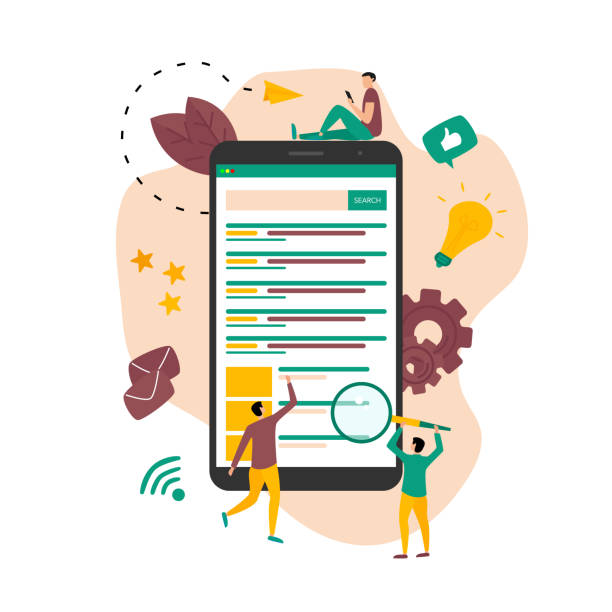The Importance of Multilingual Website Design in Today’s World
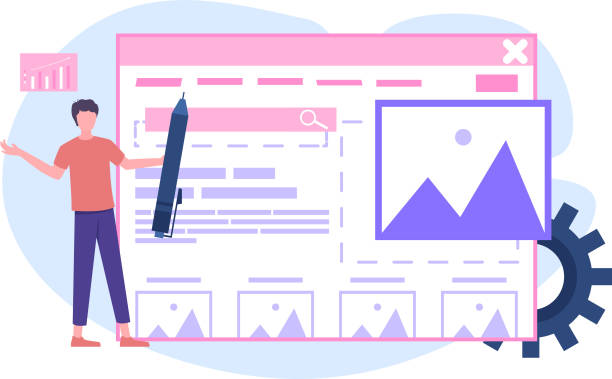
In the #digital age and era of #global communication, access to international markets is no longer an option, but a necessity.
Multilingual website design is no longer just a luxury feature; it is the backbone of the growth strategy for any business that dreams of transcending local boundaries.
This educational approach shows us how we can significantly expand our reach by providing content in various languages.
Global statistics clearly show that most internet users prefer to receive information in their native language, even if they are fluent in other languages.
Ignoring this need means losing a huge segment of potential audiences worldwide.
A website with multilingual capabilities allows businesses to convey their message to millions more people and introduce their products or services to different language communities.
This not only helps attract new customers but also improves user experience and increases audience trust, as they feel your business values their culture and language.
Thus, internationalization and localization of websites have become an integral part of modern marketing strategies.
Is your company’s website as professional and trustworthy as it should be? With specialized corporate website design by Rasaweb, create an online presence that reflects your credibility and attracts more customers.
✅ Build a powerful and professional image for your brand
✅ Convert visitors into real customers
⚡ Get a free consultation now!
Challenges and Opportunities of Multilingual Websites
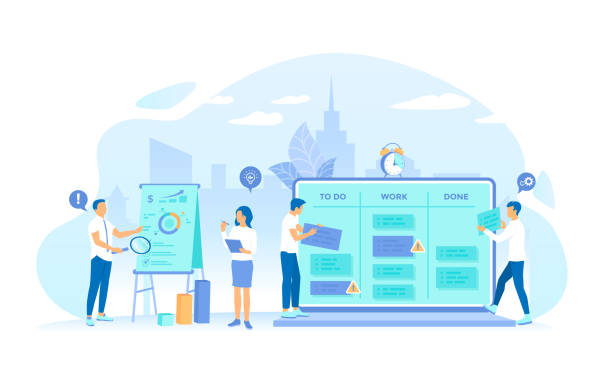
Implementing a multilingual website, while offering countless opportunities, also comes with its unique challenges.
One of the most important challenges is ensuring accurate and culturally appropriate translation of content.
Is simply translating words enough, or should attention be paid to tone, local idioms, and cultural differences? This is a thought-provoking question whose answer directly impacts the site’s success.
Ignoring these factors can lead to misunderstandings or even unintended offense.
However, the opportunities are much broader.
A multilingual site provides access to emerging markets that your competitors may not have entered yet.
This gives you a significant competitive advantage.
Technical challenges also include choosing the appropriate URL structure (subdomains, subdirectories, or dedicated domains), managing character encoding (UTF-8), and ensuring correct functionality across different browsers.
Opportunities include increased local and international SEO, attracting more traffic, and ultimately, global sales growth and branding.
Multilingual website design must approach these challenges and opportunities with an analytical perspective to fully leverage its potential.
This path helps companies not only provide a mere translation of their website but also offer a localized and rich user experience for every audience.
Methods for Implementing Multilingual Website Design
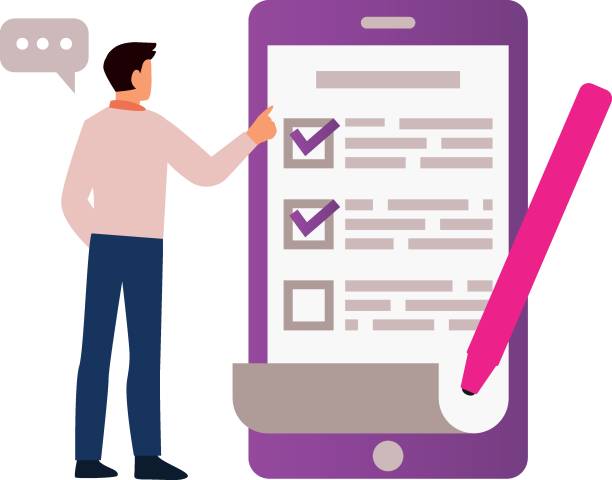
Choosing the right method for implementing multilingual website design is one of the most important technical decisions that will affect SEO, maintenance, and user experience.
There are three main approaches, each with its own advantages and disadvantages.
This specialized and guidance section examines these methods.
Subdomains like “es.example.com” allow separate hosting for each language and help search engines consider the content as independent sites, which can be beneficial for regional SEO.
Subdirectories like “example.com/es/” are the most common method and indicate to search engines that all languages are part of a single main domain, which can help transfer domain authority.
Finally, country code Top-Level Domains (ccTLDs) like “example.es” are the best option for strong country targeting, but they are more expensive and complex to manage.
The choice between these methods depends on the overall business strategy, budget, and SEO goals.
There is no one-size-fits-all solution, and all aspects must be carefully considered.
Multilingual website design can be much more effective when these technical details are taken into account.
| Method | Advantages | Disadvantages | SEO |
|---|---|---|---|
| Subdomains (es.example.com) | Strong geographical targeting, separate hosting | Requires separate SEO management, may be treated as independent sites | Good for regional SEO, requires building separate authority |
| Subdirectories (example.com/es/) | Easier management, domain authority transfer, cheaper | Slightly weaker geographical targeting than ccTLDs | Common and effective, main domain authority is strengthened |
| Country Code Top-Level Domains (example.es) | Strongest geographical signal, best for local trust | Most expensive, most complex management, requires separate hosting and SEO | Best for targeted country SEO |
Search Engine Optimization (SEO) for Multilingual Websites
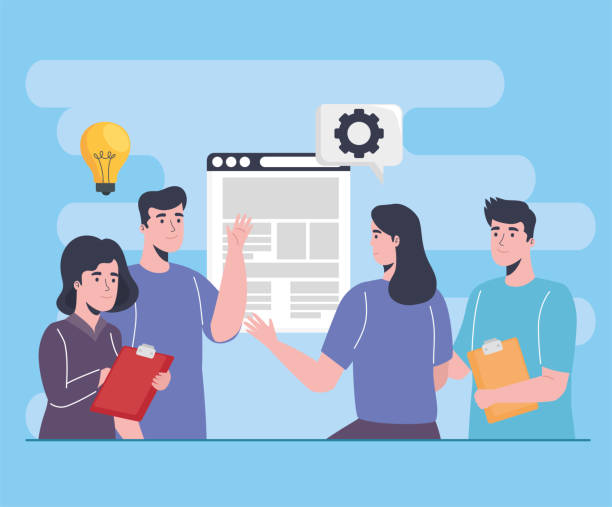
The success of a multilingual website is not limited to its visual design; it also depends on Search Engine Optimization (SEO) for each language.
Multilingual SEO has its own complexities, and failing to adhere to them can lead to lower site rankings and loss of traffic.
One of the most vital tools is the correct use of the hreflang tag.
This tag tells search engines like Google which version of the page is intended for which language and geographical region.
This prevents duplicate content issues and ensures that users see the appropriate content version.
Keyword research must also be conducted for each language, considering cultural and dialectal differences.
Words common in one language may have a different meaning or not be used at all in another.
Multilingual website design should be accompanied by a precise SEO strategy to achieve global goals.
This includes creating separate XML sitemaps for each language, using correct canonical tags, and ensuring website loading speed in different regions of the world.
Multilingual SEO is an educational and ongoing process that requires continuous monitoring and optimization.
Did you know that customers’ first impression of your company is your website? Increase your business credibility manifold with a powerful corporate website from Rasaweb!
✅ Exclusive and eye-catching design tailored to your brand
✅ Improved user experience and increased customer acquisition
⚡ Get a free consultation!
Content and Translation in Multilingual Website Design

The beating heart of any website is its content, and in multilingual website design, the quality of content and its translation takes on double importance.
Simply translating words from one language to another is not enough; instead, the localization process must be performed.
This means adapting content to the culture, values, and expectations of local audiences.
For example, idioms, cultural references, dates, currency units, and even colors must be carefully considered to prevent any misunderstandings.
It is essential to use professional translators who not only have full command of the target language but also have a deep understanding of its culture.
Machine translation, although fast and cheap, is usually unable to grasp and convey cultural nuances and appropriate tone and can harm brand credibility.
Producing explanatory and high-quality content in each language builds audience trust and helps improve SEO rankings.
Successful multilingual website design is based on content that connects with the local audience, not just a dry, lifeless translation.
This process includes meticulous review, editing, and testing of content in a real environment by native speakers to ensure its accuracy and effectiveness.
User Experience (UX) in Multilingual Websites

User Experience (UX) is a vital factor in the success of any website, and its importance is doubled in the case of multilingual website design.
Poor UX can lead to user confusion and quick abandonment of the site.
One of the first and most important aspects is the ease of finding and changing language.
The Language Switcher should be easily accessible and visible, usually in the site’s header or footer.
Additionally, it must be ensured that the visual design and page layout for different languages, especially those written from right-to-left (RTL) like Persian and Arabic, are correctly adapted.
Fonts should be readable and appealing, and sufficient space for longer texts in different languages should be provided.
Site loading speed in different geographical regions also affects user experience; using a Content Delivery Network (CDN) can help improve it.
Another explanatory point is that forms, error messages, and purchasing processes must be fully localized in each language so that users have no problems interacting with the site.
Successful multilingual website design means providing a seamless and comfortable experience for every user, regardless of their native language.
This guidance emphasizes the importance of visual and functional design for each language.
Management and Maintenance of Multilingual Websites
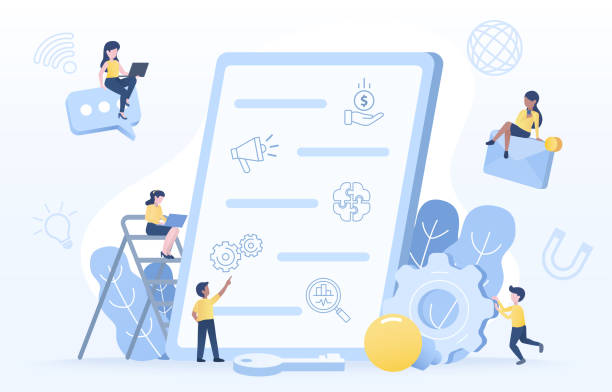
After launch, managing and maintaining a multilingual website also comes with its own complexities.
Choosing a suitable Content Management System (CMS) that fully supports multilingual capabilities is the first step.
CMSs like WordPress with suitable plugins, Drupal, or Joomla, allow for managing content in various languages.
Updating content, adding new pages, or making changes to products and services must be done consistently across all languages to avoid providing conflicting information.
This specialized process requires a coordinated team of writers, translators, and developers.
Monitoring site performance, checking for broken links, and ensuring correct translations periodically are other important maintenance tasks.
Website security must be guaranteed across all language versions.
Multilingual website design is not a one-time project but an ongoing commitment to maintaining quality and communication with global audiences.
Using automation tools for translation management and updates can reduce workload and increase efficiency.
This educational section emphasizes the importance of planning for long-term maintenance.
| Item | Description | Frequency | Responsible |
|---|---|---|---|
| Content Updates | Matching new content across all languages | Weekly/Monthly | Content and Translation Team |
| Broken Link Check | Finding and fixing broken links in each language | Monthly | Technical Team |
| Translation Review | Ensuring accuracy and quality of translations and localization | Quarterly | Native-speaking Translators |
| Performance Monitoring | Checking site speed and performance in different regions | Weekly | Technical Team/SEO |
| Backup | Creating backups of all language versions | Daily/Weekly | Technical Team |
Useful Tools and Platforms for Multilingual Website Design

To facilitate the process of multilingual website design and its management, numerous tools and platforms are available to help you.
Choosing the right tool is as important as the design itself.
For WordPress, plugins like WPML (WordPress Multilingual Plugin) and Polylang are among the most popular options, providing easy translation management, language selection, and multilingual SEO settings.
These tools are very efficient for managing news and static content.
For larger and enterprise projects, more advanced Content Management Systems like Drupal with powerful language modules, or specialized solutions like Contentful and Strapi, which act as Headless CMS, are good options.
These platforms offer greater flexibility in frontend design and development.
Also, Translation Management Systems (TMS) such as Phrase, Smartcat, or Crowdin help teams automate, collaborate on, and monitor the translation process.
These tools allow direct communication with translators and ensure translation quality.
Guidance in choosing the right tool can save time and money.
Investing in the right tools significantly increases the efficiency of the multilingual website design process and prevents human errors.
Research shows that 80% of customers trust companies with a professional website more. Does your current site inspire this trust?
With Rasaweb’s corporate website design services, solve the problem of customer distrust and weak online image forever!
✅ Create a professional image and increase customer trust
✅ Attract more sales leads and grow your business
⚡ Get a free consultation
Case Study and Fun Facts in Successful Multilingual Websites

Seeing successful examples of multilingual website design can be inspiring and offer entertaining and educational insights.
Big brands like Apple and IKEA have been very successful in providing localized experiences to their customers worldwide.
They not only translate content but also adapt design, images, and even product offerings based on geographical region and local culture.
This analytical approach allows them to establish deeper connections with their audiences.
One of the fun facts in the world of translation is the amusing or strange mistakes that sometimes occur in machine or unprofessional translations.
For example, a famous clothing brand once translated its advertising slogan into Spanish, which ultimately meant “We allow you to be dead”! This type of mistake shows why the importance of human translators and localizers in the multilingual website design process is undeniable.
Case studies of these companies show that success in global markets requires a deep understanding of cultural and linguistic differences and cannot be simply overlooked.
These lessons teach us that localization goes beyond translating words.
The Future of Multilingual Website Design and New Trends

The future of multilingual website design is rapidly evolving, with new trends emerging that will significantly impact how we interact with global audiences.
One of the most important trends is the advancements in Artificial Intelligence (AI) in the field of translation.
Although machine translation still requires human review, its accuracy and quality are continuously improving.
This can make the translation process faster and more cost-effective.
Real-time translation and automated localization based on AI can elevate the user experience to an entirely new level.
This is a significant news development.
Another trend is the increasing importance of voice search and image search in different languages, which requires new SEO strategies and content adaptation to these formats.
Also, with the growth of emerging markets in Asia, Africa, and Latin America, the need for supporting less common languages and local dialects will increase.
Future multilingual website design will increasingly rely on personalization and providing content that is highly relevant to each user, based on their language, geographical location, and even browsing history.
This analytical approach helps businesses establish deeper connections with their audiences in today’s complex and diverse digital world.
Frequently Asked Questions
| No. | Question | Answer |
|---|---|---|
| 1 | What is multilingual website design? | Multilingual website design means creating a website whose content is available to users in several different languages. This is usually done through a simple user interface for changing the language. |
| 2 | Why should we design a multilingual website? | Multilingual website design helps you reach a larger audience worldwide, provide a better user experience for international users, and improve your global SEO. |
| 3 | What are the main methods for implementing multilingualism on a website? | The main methods include using subdomains, subdirectories, or URL parameters for each language, as well as using completely separate domains for each language. |
| 4 | For SEO, is it better to use a subdirectory or a subdomain? | From an SEO perspective, both subdirectory and subdomain methods can be effective. However, many SEO experts prefer subdirectories due to better transfer of main domain authority. |
| 5 | What are the important points in translating multilingual website content? | Translation should be done by native translators, content should be localized in addition to translation to align with the target audience’s culture, and pure machine translation should be avoided. |
| 6 | What is the role of the hreflang tag in multilingual site SEO? | The hreflang tag helps search engines like Google display the correct language and regional version of a page to the appropriate users, which also prevents duplicate content issues. |
| 7 | Can a website be made multilingual without coding? | Yes, in Content Management Systems (CMS) like WordPress, powerful plugins such as WPML or Polylang exist that enable making a website multilingual without needing to code. |
| 8 | What are the challenges of multilingual website design? | Challenges include translation management, content localization, adherence to SEO principles for each language, technical support for different languages, and ensuring design consistency across different languages. |
| 9 | What is the difference between translation and localization? | Translation is merely rendering words from one language to another, while localization involves adapting content to the culture, customs, currency, date and time formats, and even appropriate colors for the target audience. |
| 10 | What is the best User Experience (UX) for language switching? | A clear and accessible language switcher (usually in the header or footer), using language names instead of flags (due to regional diversity), and maintaining the user’s position after changing the language are important UX points. |
Other services of RasaWeb Advertising Agency in the field of advertising
The role of high-quality images in online laptop sales ads
Improving notebook ad ranking on online job platforms
Effective keywords for laptop ads in online banks
Creating notebook sales ads with high customer conversion capability
The impact of detailed descriptions on the success of laptop ads
And over hundreds of other services in the field of internet advertising, advertising consultation, and organizational solutions
Internet advertising | Advertising strategy | Sponsored articles
🚀 To achieve the peaks of success in the digital world, Rasaweb Afarin Digital Marketing Agency, with expertise in SEO, content marketing, and multilingual website design, paves the way for your business growth.
📍 Tehran, Mirdamad Street, next to the Central Bank, Kazeroon Janubi Alley, Ramin Alley, No. 6

